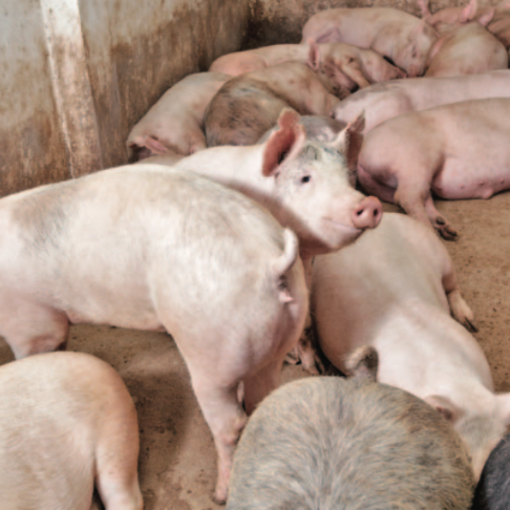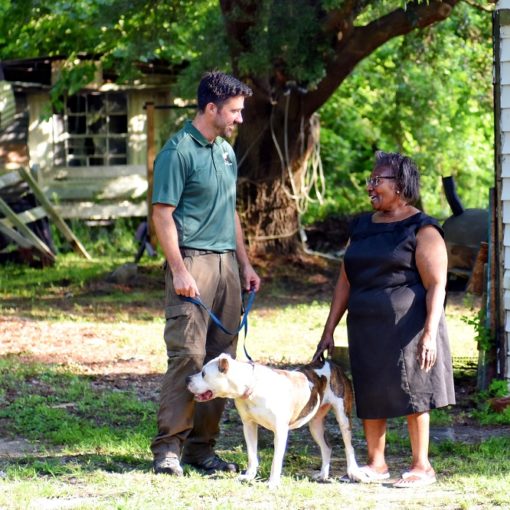Next time you want to experience a place that is wild, natural, beautiful, and close to home, head over to Sullivan’s Island. Start at Station 16 and Atlantic Avenue and follow the trail through the maritime forest to the beach. You could see as many as 80 species of birds, including the painted bunting, and creatures such as rabbits and racoons. In this amazing habitat—a rarity along the East Coast—you will also see more than 125 species of trees and other plants that include live oaks, magnolia, and palmettos. When you’re out there, it’s easy to forget that you’re walking along a largely developed coastline and beach.
FOREST IN DANGER
But last October, the Sullivan’s Island Town Council voted to approve a plan that will cut portions of the forest because a group of beachfront property owners believe the forest limits their views and ocean breezes. We at the Conservation League think the forest must be protected and that a better balance can be achieved.
While most barrier islands are eroding, Sullivan’s Island is actually expanding because of the jetties built at the entrance of the Charleston Harbor in the late 1800s, providing safe passage for large ships. These jetties essentially trap sand on Sullivan’s Island, preventing it from naturally moving south. The maritime forest that has grown up on this expanded land also protects the island from rising seas and storm surge.
HEAVEN ON EARTH FOR BIRDS
Migratory birds use the maritime forest as an important stopover point, finding temporary refuge and food in the eastern red cedars, Carolina cherry laurels, wax myrtles, and other plants scattered around. Foxes slowly make their way throughout, only appearing on occasion to the keenest observers. Butterflies abound, adding sharp contrast with their colorful wings. In short, this forest serves a vital role by providing safe harbor to wildlife that would otherwise not reside here, which is such a gift we’re lucky to enjoy ourselves.
PROTECTION FOR PEOPLE & PROPERTY
Though many might find the value it provides to wildlife to be paramount, it cannot be ignored that the forest is an impressive means of protection for the island. As storms intensify with the changing climate, this land provides a natural buffer for the homes behind it, stabilizing the shoreline by reducing erosion, slowing wind, and blocking storm surge.
Because of these characteristics, it is vital that this sort of habitat be managed in the most sensitive way, ensuring it can continue to provide for the people, plants, and animals who depend on it.
For decades, the community of Sullivan’s Island has struggled to find consensus on the best way to manage this area. While some would prefer to see it completely untouched, others have advocated for aggressive management approaches that would remove many trees and plants to a height of only a few feet in most locations. Some residents fall somewhere in between these two views, believing a balance can be achieved.
So far, that hasn’t happened.

MARITIME FOREST HISTORY
A little history might be helpful here. The Town of Sullivan’s Island conserved the land where the maritime forest now sits in 1991—after Hurricane Hugo ravaged the coast in 1989—hoping to protect it from development. Over the years, the vegetation grew into the forest, and the methods of managing that forest have always been controversial.
Since 2010, a small group of property owners has been pushing the town to trim and prune areas of the forest by their properties, attempting to cut vegetation to a height less than five feet.
In October 2020, Town Council approved a settlement agreement with those residents that would end the decade of ongoing litigation. Unfortunately, the terms proposed in the settlement agreement don’t protect the ecological integrity of the forest or maximize the native plant and animal diversity. They also apply to the entirety of the maritime forest and not solely the sections of it adjacent to homes.
The town hasn’t finalized plans—they still need permits before work can begin. The process is still ongoing and we’re still waiting
to learn more about what all of this means for the forest. We will continue to post the latest news on our website, a place you can also learn more about the history of the maritime forest as well as sign up for email updates. And of course, we will continue to speak up for this special place.
One thing is clear: any action that eventually takes place will have irreversible effects on this stunning ecosystem. We hope when the time comes that those management activities will prioritize the integrity of the resource and all that it does for people and wildlife alike.
To learn more about what all of this means for the forest. We will continue to post the latest news on our website, a place you can also learn more about the history of the maritime forest as well as sign up for email updates. And of course, we will continue to speak up for this special place.
One thing is clear: any action that eventually takes place will have irreversible effects on this stunning ecosystem. We hope when the time comes that those management activities will prioritize the integrity of the resource and all that it does for people and wildlife alike.

Yellow Warblers are one of hundreds of bird species that call the maritime forest wetlands home.
WHAT CAN YOU DO TO SAVE THE FOREST?
Contact the permitting agencies and let them know you do not want cutting allowed in the maritime forest. Urge your friends and family to do the same. Your voice will make a difference!
DHEC-OCRM
Elizabeth Von Kolnitz, Chief, DHEC-OCRM (843) 953-0252 • vonkoleb@dhec.sc.gov
US ARMY CORPS OF ENGINEERS
Travis Hughes, Corps of Engineers
(843) 329-8044 • travis.g.hughes@usace.army.mil
BIRD BANDING STATION THREATENED
BY CUTTING
The Maritime Forest is also home to the Sullivan’s Island Bird Banding Station run by researcher Sarah Diaz. She says 865 birds were banded from 45 species just this past fall! Sadly, the bird banding station is also threatened by the Town Council’s plan to cut the forest. Learn more about the bird banding station on
Facebook or at www.sibirdbandingstation.blogspot.com.
EMILY CEDZO is the Land, Water & Wildlife Program Director at the Coastal Conservation League www.coastalconservationleague.org)





